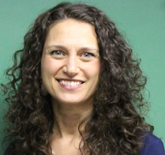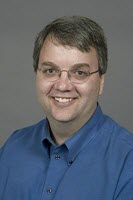Here’s a cautionary tale about DNA contamination from The San Francisco Chronicle.
By Henry K. Lee
When a San Jose man charged with murdering a Monte Sereno millionaire was suddenly freed last month, prosecutors acknowledged he had an airtight alibi – he was drunk and unconscious at a hospital when the victim was killed in his mansion miles away.
But a mystery remained: How did the DNA of 26-year-old Lukis Anderson – who was so drunk his blood alcohol content was five times the legal limit – end up on the fingernails of slaying victim Raveesh “Ravi” Kumra?
Santa Clara County prosecutors answered that question Wednesday, saying the same two paramedics who had treated Anderson for intoxication at a downtown San Jose liquor store in November had responded to Kumra’s home just hours later.
“It’s a small world,” said Deputy District Attorney Kevin Smith. “We are pleased to have finally been able to determine how we believe the DNA got from Mr. Anderson to Mr. Kumra.”
Anderson’s attorneys from the public defender’s office reacted cautiously. “It is really too early to comment on any of this because we don’t have all of the DNA reports, and our experts have not yet examined any evidence,” said Public Defender Molly O’Neal. “We want to conduct our own investigation and only then comment on the DNA and any transference theory.”
Anderson spent more than five months in jail after he was connected to the slaying of Kumra, a cell phone entrepreneur and former Saratoga winery owner, during a home-invasion robbery. Two alleged Oakland gang members and a prostitute – people Anderson had never met – remain charged in the case.
A charge of accessory to murder was dismissed Wednesday against a second alleged prostitute, Raven Dixon, after authorities determined that she did not have any ties to the slaying, Smith said.
Dixon, 22, pleaded no contest Friday to prostitution with a gang enhancement as well as a marijuana charge, both felonies. She is expected to be released with credit for time served – seven months – when she is sentenced in July.
Dixon’s attorney, Andrew Dosa, said police initially believed his client was involved because she had taken pictures of Kumra’s home – months before the slaying – and posted them on Instagram, the photo-sharing service, through her Facebook account. The photos didn’t show the front door or any access points, he said.
“It basically says, ‘Look how big this house is,’ ” Dosa said. “I think she posted it because she thought it was interesting. It’s a mystery to me why they thought she was involved in the first place.”
Kumra’s body was found Nov. 30 after police were called by his wife, Harinder Kumra, 63, to their ransacked 7,000-square-foot brick mansion on Withey Road, in the hills west of San Jose. Kumra died of asphyxiation after his assailants left him gagged with packaging tape as they beat his wife and told her to “be quiet if you want to live,” police said. They made off with cash, jewelry and rare coins.
Anderson was arrested a week later. But investigators later confirmed that he had been brought to Valley Medical Center in San Jose by a two-man crew from Santa Clara County Ambulance about two hours before the attack on Kumra began, Smith said.
Anderson was still at the hospital 12 hours after the victim was killed, the prosecutor said. His blood alcohol content was 0.40 percent, five times the legal limit for driving, authorities said.
The paramedics physically moved both Anderson and Kumra, resulting in the inadvertent DNA transfer, Smith said. Authorities would not discuss whether the paramedics had properly cleaned themselves between the two calls. Citing the unique nature of the two incidents, Smith said, “This is not going to happen on a regular basis.”
Brian Hubbell, an ambulance company spokesman, said, “We follow the highest standards when it comes to infection control and cleanliness. We consistently and always wash and clean all of our equipment in between patients.”
Defense attorneys had initially questioned whether the county crime lab might have made a mistake. Smith said the investigation confirmed there was no impropriety.


















An interesting example of secondary DNA transfer.
Pingback: A Cautionary Tale Of DNA Evidence | Politiva